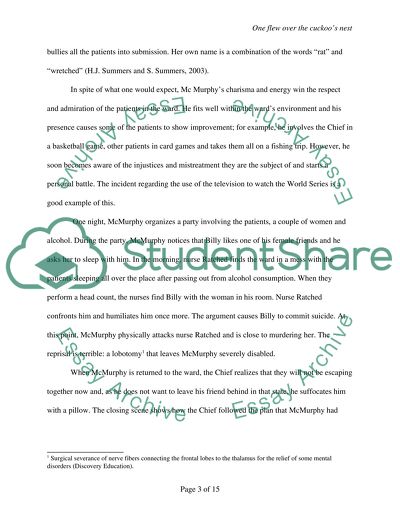Cite this document
(“One flew over the cuckoo's nest Movie Review Example | Topics and Well Written Essays - 2250 words”, n.d.)
Retrieved from https://studentshare.org/miscellaneous/1502569-one-flew-over-the-cuckoos-nest
Retrieved from https://studentshare.org/miscellaneous/1502569-one-flew-over-the-cuckoos-nest
(One Flew over the cuckoo'S Nest Movie Review Example | Topics and Well Written Essays - 2250 Words)
https://studentshare.org/miscellaneous/1502569-one-flew-over-the-cuckoos-nest.
https://studentshare.org/miscellaneous/1502569-one-flew-over-the-cuckoos-nest.
“One Flew over the cuckoo'S Nest Movie Review Example | Topics and Well Written Essays - 2250 Words”, n.d. https://studentshare.org/miscellaneous/1502569-one-flew-over-the-cuckoos-nest.


